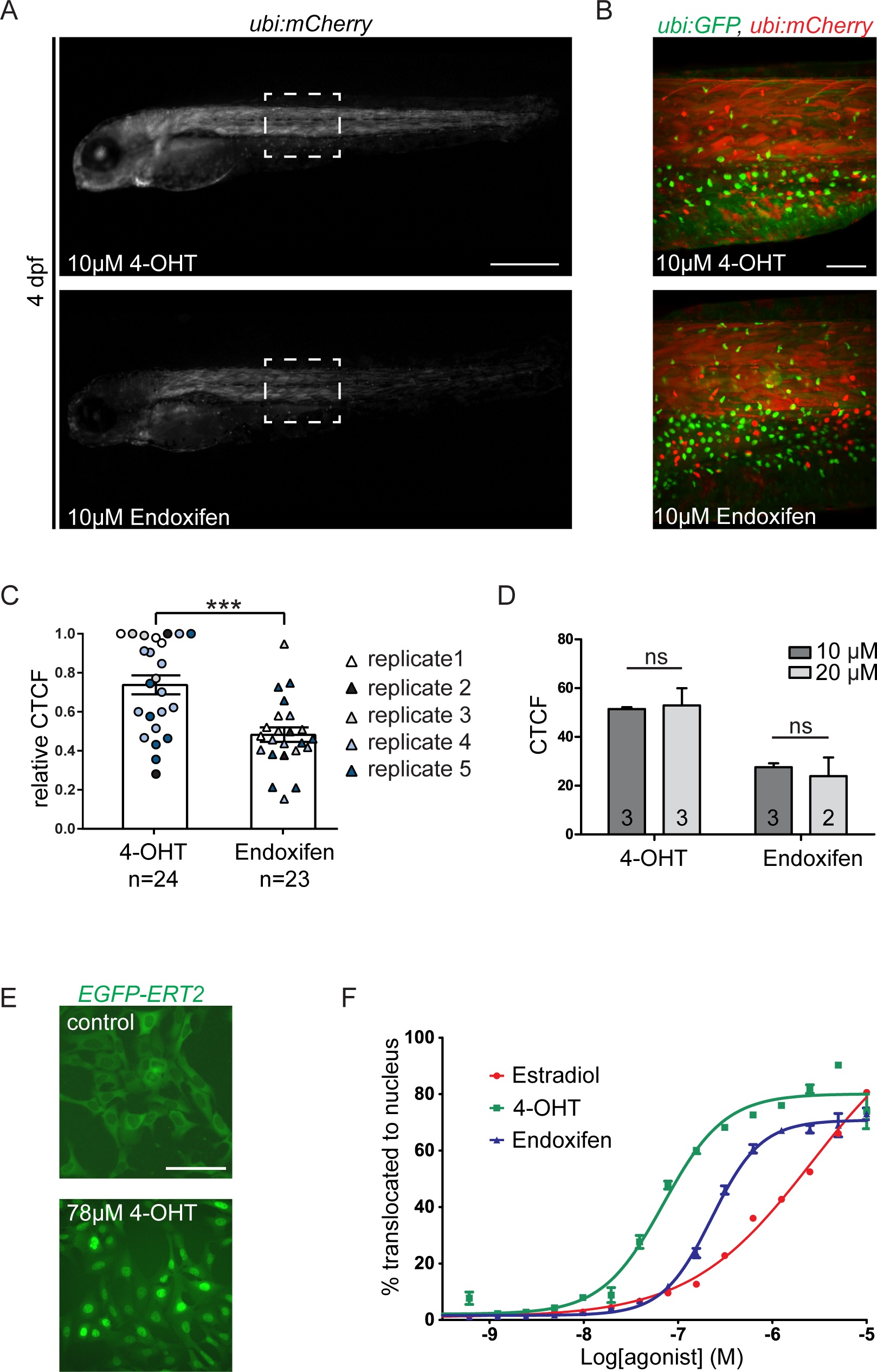Fig. 2
Endoxifen potently induces CreERT2 activity in zebrafish and ERT2 reporters in cell culture. (A) Fluorescence intensity was quantified in ubi:creERT2;ubi:Switch embryos induced with freshly dissolved trans-4-OHT and Endoxifen (both 10 µM) as a measurement for drug potency (scale bar 500 µm). (A, B) Both compounds efficiently confer CreERT2 mediated recombination as seen in the whole embryo and maximum intensity projections of the trunk imaged with the Zeiss Z.1 lightsheet microscope. (A) scale bar 500 µm, (B) 100 µm. Representative images are shown for each condition. (C) Quantifications of the fluorescence show that Endoxifen induces CreERT2 activity with approximately half the potency (two-tailed, unpaired t-test, p = 0.0001). (D) Switching experiments were done at saturated conditions; increasing the concentration does not increase potency neither for trans-4-OHT nor Endoxifen (two-way ANOVA, column p-value 0.8232). (E) EGFP-ERT2 cells were treated with different concentrations of E2, trans-4-OHT, and Endoxifen. Cells were imaged after 20 hours post treatment using High-content imaging system Operetta (Perkin Elmer). Representative images are shown (scale bar 100 µm). (F) Data from multiple fields were analyzed using Columbus software (Perkin Elmer) and the percentage of translocation was plotted using GraphPad Prism software. Endoxifen acts with slightly lower potency than trans-4-OHT, but both compounds are more potent than the native ligand E2.

